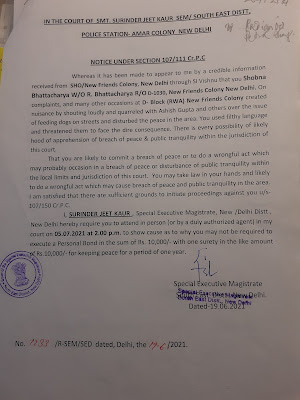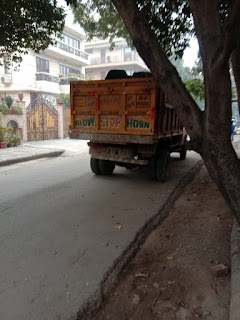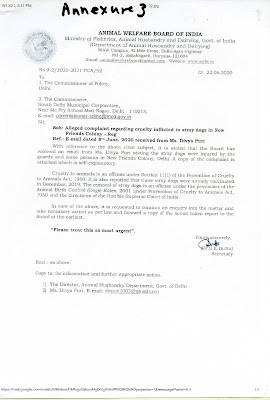Duxford is a 12th
C village about 16 kms south of Cambridge, UK. It is a sleepy pretty village
that has two ancient churches and two old pubs. It has a few modern industries
on its bustling outskirts. More than a hundred years ago an airstrip was
stretched outside this village across Royston road to the south. Later, it opened
as a military airfield in 1917 during WW I. It was one of 301 military
airfields then. During the Battle of Britain (10 July – 31 October 1940) in WW II it was a crucial airbase for preventing attacks
by German aircraft. In WW II there were about 1250 aerodromes. Geographically
tiny “Britain was just one big airfield.”
From the infancy
of flight, through to the dramatic days of tension and bloody strife during the
Second World War, Duxford has played a central role in the development of
aviation history. The Imperial War Museum at Duxford first started hesitantly in
1920, but the air field continued to be in military use till 1961. During WWII
it was a RAF base. From November 1944 it became one exclusively for US fighters
and bombers.
Air shows started
in October 1973. Duxford is now UK’s largest Aviation Museum and has the finest
collection of more than 200 old but well maintained aircraft from France, Germany,
UK, USA, and the former Soviet Union. Many of them fly. The very first hangar
in the airfield is that of a private company that restores legends. There are
three cavernous exhibition hangars on the North of the runway. In between the
UK and US hangars are three heritage hangars still in use. One is loaned to an
aircraft reconstruction company where people can see old aircraft being
repaired. The others exhibit airplanes. The
IWM is open throughout the year.
Several huge passenger
aircraft are permanently parked in a corner of the vast grounds. Many are
familiar, some are not. One exhibit is of the de Havilland Rapide 8 seater twin
engine passenger biplane built of plywood in 1933. It used to do short trans
channel hops then. Now, not only does it move, but it gives expensive happy joy
rides. It is surprising how there’s always a long queue eager to pay £ 100toget
on board.
The enthusiasm for
IWM Duxford is so intense that three generations are there in large numbers. Grandparents,
parents and children from teens to infants. At this air show there was one
great grand dad – an RAF veteran- in a wheel chair being rolled around by his
teenage descendant. However, teenagers were the least represented age group!
Inside the UK and
US hangars is a large two level static display of all kinds of civilian and
military planes. Quite a few planes – even a Canberra bomber- are hung from
ceilings. The first hangar, closest to the entrance, is for British fighter and
passenger planes and the other for USAF war planes from WW II till those phased
out of service twenty five years ago. Further ahead there’s an another large
hangar for tanks and motor vehicles and heavy guns of WW II combatant
countries. Each is an eye opener. The IWM at Duxford is worth seeing repeatedly-
for one can’t see enough in one visit.
Immediately inside
the entrance of the UK hangar is a huge well lit sign quoting Leonardo da
Vinci- Once you have tasted flight, you will walk the earth with your eyes
turned skyward. This is true even for those who are only passengers.
In front of the hangars
is a long belt of green. One corner has a playground for children to hop on and
off skeleton planes. Another has a collection of a meter and a half long cute
scale models of well known planes of the past patiently made by aviation
hobbyists. They are flown by remote control. The rest of the open space is taken up by rows of eateries. One
serves unusual preparations like strawberries and chocolate chips swimming in a
glass of dark chocolate ice cream. Other booths handout information pamphlets,
while the rest sell souvenirs and books about the world wars and planes and men
and women who flew them. Yes, there were women flying planes in WW II too. They
transported planes from factories to air bases such as Duxford.
Air shows are held
at Duxford six times every year. This year was the 85th anniversary
of the Battle of Britain and special airshows were held in Duxford to
commemorate that with legendary surviving airplanes from WW II flying low
overhead. On the 6th of September, 2025 I was there for an
anniversary display.
WWII planes like Boeing
B 17 Fortress, Curtiss Warhawk, Douglas Invader, Hawker Hunter, a Mustang, Spitfires,
Focke Wolfe, Sopwith Snipe and a Sopwith Triplane, a Yak 17, a Vampire, a
Lancaster, a Messerschmitt and a few more flew by and thrilled people with mock
dog fights. The latest antique from USA is the Lockheed Blackbird! They are
parked in a long and wide green patch between the taxiway and the runway in
front of the spectators’ grounds. During the WW II this green stretch about one
and a half kilometers long was used as a runway too. It provided a soft landing
for shot up planes that could not bring their undercarriages down. It was used
during the air show too.
Till noon people
are allowed to walk along the taxiway, but not to cross the green. There’s
impressive discipline here. Thousands line the green but none takes more than
one step on it even though volunteers stand about a 100 meters apart. There’s
not even a hum of hushed whispers in this orderly line up. All are busy gawking
at the beautifully manicured sleek war birds of old, and taking pictures of
them. Later after noon most of them will be flying to every one’s delight.
Trailing smoke
from ‘injured’ planes and noisy ‘bombs’ add reality and raises continuous oohs
and aahs. Before take off these planes considerately taxi just 20 meters away from
the excited throng.
Thousands upon
thousands crowd Duxford on flight days. Many bring tents, camp seats and
tables, cutlery, picnic baskets and of course children. Its like being in an
Indian mela but without raucous noise and rowdiness. One may not hear a pin
drop but certainly a loud laugh. A quiet expectant grace hovers over the
spectators. Some have paid £20 for grand stand seats.
Between the first
flight and the last is a lot of action by British, German, Portugese, Russian
and US planes- military and civil. Two of the earliest jets made – the British
Vampire and the US Sabre show that they can still perform aerobatics.
The air show
starts at 13.05 with a single two engine propellor war plane, with US markings,
flying by. There is gentle clapping and faces light up with keen excitement and
burning interest during every fly past. Towards the end are the special 85th
Anniversary flights of Battle of Britain. The second last flight is by the
legendary Avro Lancaster four engine bomber- the only one working in the world
today. It flies in from the back of the crowds. Crosses the stands and then
pirouettes to the left flies straight ahead for two minutes and makes a wide U
turn to fly past once more and then disappears in the direction it had come
from. Immediately afterwards, at about 16.30 hrs, the last spectacular flight starts.
Sixteen WW II Supermarine Spitfires and six Hawker Hurricanes fly above the
entranced spectators. They return again and again and the happy crowd roars- at
last. The show is finally over and the thousands disperse quietly of course.
Some fall in line to get a lift in one of the fifty or so buses especially
chartered by IWM. Most return by cars to Cambridge or more distant towns.
Duxford has a
connection with Assam too. In this village is an Airforce mess. Near it are two
curving roads named Ledo and Burma. During the WW II RAF fighter Squadron # 92
was posted in Dibrugarh, Upper Assam. Its job was to escort cargo planes and
bombers flying across the Burma Hump to Kunming, China. It was posted in Upper
Assam for so long that its insignia became a coiled cobra with its hood spread
out in attack mode. After the war it was transferred to Duxford. This squadron renamed
these two roads. Some of the houses on either side of these roads were built by
Edwin Lutyens in 1933 for RAF personnel. Lutyens was the one who had designed
Rashtrapati Bhavan and the Hyderabad House in Delhi too.
Every time that I
have visited Imperial War Museum and Duxford village, I have always found
something new and it has always been an agreeable experience.
Romesh
Bhattacharji
1- A de Havilland
Rapide flies NNE over the green airstrip of Duxford. At the back is the largest
hangar of the Imperial War Museum. It has British fighter and civilian
planes. The smaller hangars repair and
maintain the relics.
1- Many thousands – young and old- come for these flying
displays. A gentle calmness covers the grounds where thousands bring tents,
picnic hampers and camp chairs. A charming scene if ever there was one. At the
back stand WWII legends- the US built two engine Catalina Flying boat and the
four engine Boeing B 17 Fortress bomber.
1- More impressive than the line up of aircraft is the
line of people – three or four deep- along the green. There’s no pushing or
shoving or shouting. And hardly any supervision. When one is done taking
pictures another one steps in. This extraordinary discipline is a sight to
see.
1- The beautiful 1930 de Havilland built British Tiger
Moth two seater trainer and two other vintage aircraft of the same vintage. The
Tiger Moth is still being used as a trainer in several countries. Planes like
these fly and land to keep people engrossed till the main air display
starts.
1- A Boeing Stearman biplane entertains the crowds. It
was a late 1930s built US trainer. After the war and till today it is used as a
crop duster!
1- Before the air show all the participating aircraft are
lined up for people to see from close by. Now and then one or two planes take
off with the appropriate loud thump thump that only propellors can make. Here a
Spitfire is taxing to take off.
1- This is a replica of the most feared and notorious
airplane of all in the first World War. It is a German Fokker Triplane in the
Red Baron’s distinctive colour- red. Red Baron was the name given to Baron von
Ricthofen. He was considered by all sides to be the ‘Ace of Aces’. He is
credited with proven 80 kills. He was killed by ground fire over France in
April 1918. Within hours of his crash very little was left of his plane.
Souvenir hunters had taken all.
1- The British built Fairey Swordfish torpedo bomber has
an unusual history. Despite being the slowest plane in WW II it was the most
successful having disabled the famous Bismarck battleship. It sank more ships
than any other Allied plane. Its slow speed was too slow for 350 mph aircraft
of the Axis!
1- The Russian Yakovlev Yak 3 was the smallest and most
rugged and agile plane during WW II. It had a top speed of 655 kmph. It was
feared by the Luftwaffe.
1- A visitor pretending to be a Ground Movement Coordinator and
enjoying herself.
The North American Texan T known in Europe as Harvard. This one has Portugese markings. It was used in WW II but lasted till the 1970s. It was used to suppress independence movements in the Palestine, Portugese Africa and the Mau Mau in Kenya. In 1955 rebellious Argentinian sailors used it to bomb parts of Buenos Aires. Pakistan Air Force employed it in the 1965 War without success.
1- A Supermarine Spitfire taxis
past spectators before taking off. It was the back bone of the successful
resistance against waves of thousands of German aircraft during the Battle of
Britain (10 July – 31 October 1940).
The US Thunderbolt P 47 was a fast WW II fighter carrying lots of ammunition to high altitudes. Was in service from1941 to1945.
Remote controlled flying scale models of phased out aircraft being proudly displayed by their creators. At the back is the US built Catalina Flying Boat.
The single engine twin boomed Vampire that is taxing past after a flight, was developed during the Second World War, but it was ready for flight only after the war ended. It was in the Indian Air Force till replaced by French Ouragons in 1953.
1- The single engine Mig 17 was produced by the Soviet Union in 1952.
Surprisingly this subsonic plane is still in service with North Korea. Maybe
there’s an advantage of using slow planes in a supersonic age.
1- Made from plywood, the two engine De Havilland is used for expensive
joy rides. This one is about to take off despite the looming storm, which
passed Duxford to its west.
1- Waiting for the show to begin and relaxing outside the
British hangar of war and civilian planes from WW I onwards. It is the largest
hangar on these immense grounds. It is known as the Air Space Museum.
1- A two level indoor display in the British hangar. A suspended twin
jet English Electric Canberra. The Canberra could fly up to a height of about
22,000 meters. It was used by the IAF from 1957 till 2007. In the 1965 and 1977
wars with Pakistan it had bombed radar stations in Rawalpindi and oil dumps in Karachi.
It was unrivalled as a photo observation
planes too. The Pakistani Air Force too ordered some after seeing its
successful use by the IAF.
1- A British made
twin engine and three tail fin Airspeed Ambassador. It was owned by the short
lived Dan Air, which started in 1953 and was taken over by British Air in 1992.
This aircraft was pressurized and was used on chartered and regular flights.
1- The Short S.25
Sunderland British WW II amphibious patrol bomber. It was introduced in 1937 and after the War
some were sent to the Far East as there were few runways. The last one retired
from New Zealand in 1967. The black biplane in front is a Nimrod Hawker 1
aircraft carrier based plane. Behind it is suspended a Hawker Harrier VTOL
plane. The yellow planes is a Faery Swordfish. There’s an abundance of old
exhibits in the British hangar.
This Paddy Bird from Ceylon was only one of two WW I planes made. It had this peculiar name thanks to a subscription started by the Times of Ceylon to finance an aircraft for WWI.
1- The
glass fronted massive entrance to the US hangar.
The Mitchell B 25 medium range twin engine twin tail fin US bomber built for use in WW II but it remained in use till the eighties. It was an exceptionally sturdy bomber capable of flying on one engine and even after many hits. In the US hangar.
The Lockheed SR 71 Blackbird first flew in 1964, but despite expectations the last one was phased out to this museum in 1999.
This sweeping view from the entrance to the Tank and Heavy guns museum takes in every display hangar in IWM Duxford. Also seen are the retired passenger jets of the 50s and 60s.
One of Soviet Union’s formidable heavy tanks. It was introduced in 1944 and was in use till 1970. It led the Soviet attack on Berlin.
Two WW II heavy German Tanks of the Panzer class- known as tank destroyers. The tank on the left is Sturmgeschutz II and on the right is Jagdpanzer IV.
This was the tank used by Genl. Montgomery in the battle of El Alamein. The gun is made of wood as the original had been removed to make way for all kinds of wireless equipment.
1- A string of Spitfires and Hawker Hunters getting ready
to fly.
Five WW I aircraft chasing each other in a 2016 air display. The triplane to the right is a German Fokker Triplane. It is chasing a British Sopwith Camel which was faster in level flight, but the Fokker could climb faster and make narrower turns. The top left monoplane is post WW I and had joined these biplanes to show off its maneuverability!
1- A ‘burning’
Spitfire hurt in a mock dog fight.
Three British Hawker Hurricanes and an American Mustang delighting the crowd.
A Boeing B 17 Fortress lands on a green strip, from WW II, after impressing viewers with its maneuverability.
1- A Spitfire taxis close by an enthralled crowd before it takes to the
sky.
A German Messerchmitt BF 109 waiting to fly to settle old scores.
The second last flight of the three hour long flight display. The tough Avro Lancaster four engine bomber of the RAF. This is the only working survivor.
1- The last
flight- by 16 Supermarine Spitfires and 6 Hawker Hunters. These were the
backbone of the Battle of Britain the 85th Anniversary of which is
being remembered this year. They kept circling and flying again and again to
delight an excited crowd.
The Indian connection with Duxford- A road named after Ledo in Upper Assam. Ledo was the base for land and air attack on Japanese forces in Kunming, China.














































































